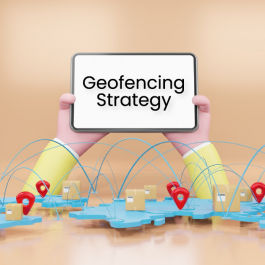4 min read

Staying ahead of the competition in today’s fast-paced digital world is critical for any business. One of the most effective ways to achieve this is through search engine optimization (SEO) and digital marketing strategies. However, with the constant changes in search engine algorithms and the increasing complexity of digital marketing, businesses need to adapt and embrace new technologies to gain a competitive edge. This blog post explores the concept of Generative Engine Optimization (GEO) and how it is revolutionizing digital marketing by leveraging artificial intelligence (AI) to optimize search engine results pages (SERPs).
Table of Contents
Search Engine Optimization (SEO)
Search engine optimization (SEO) is the practice of increasing a website’s visibility on search engines such as Google, Bing, and Yahoo. It involves various techniques and strategies to improve website rankings on search engine results pages (SERPs). The ultimate goal of SEO is to increase organic traffic, generate leads, and boost conversions.
The Evolution of Digital Marketing
Since its inception, digital marketing has advanced significantly. Traditional marketing methods have been replaced by online advertising, social media campaigns, and content marketing. With the rise of technology, businesses have shifted their focus towards digital channels to reach their target audience more effectively.
Introducing Generative Engine Optimization (GEO)
Generative Engine Optimization (GEO) is a cutting-edge approach to SEO that combines traditional optimization techniques with the power of artificial intelligence. It utilizes machine learning algorithms to analyze user behavior, search patterns, and past performance data to generate optimized content that resonates with the target audience.
How Generative Engine Optimization Works
GEO works by leveraging AI algorithms to analyze vast amounts of data and identify patterns that lead to high-performing content. By understanding user intent, GEO can create personalized and engaging content that attracts and retains visitors. It also optimizes website elements such as meta tags, headings, and images to improve search engine rankings.
Benefits of GEO in Digital Marketing
- Enhanced User Experience: GEO helps businesses create user-centric content that meets the specific needs and preferences of their target audience. This leads to a better user experience, increased engagement, and higher conversion rates.
- Improved Search Engine Rankings: By utilizing AI-powered algorithms, GEO can optimize websites for search engines more effectively. This results in higher rankings on SERPs, leading to increased organic traffic and visibility.
- Personalized Content: GEO allows businesses to create personalized content tailored to individual users based on their preferences, interests, and behaviors. This level of customization enhances customer experience and fosters brand loyalty.
- Time and Cost Savings: With GEO, businesses can automate the process of content creation and optimization, reducing the time and effort required for manual SEO tasks. This frees up resources that can be allocated to other critical aspects of digital marketing.
- Competitive Edge: By embracing GEO, businesses gain a competitive edge over their competitors who rely solely on traditional SEO practices. GEO enables businesses to stay ahead of the curve by leveraging the power of AI in digital marketing.
Implementing GEO in Your Digital Marketing Strategy

- Conduct an SEO Audit: Before implementing GEO, it is essential to assess your current SEO practices and identify areas for improvement. An SEO audit will help you understand your website’s strengths and weaknesses and provide insights into how GEO can be integrated effectively.
- Choose the Right Tools: There are various AI-powered tools available on the market that can assist you in implementing GEO. Investigate and select tools that are in line with your company’s goals and requirements.
- Analyze User Data: To effectively leverage GEO, you need access to relevant user data. Analyze user behavior, search queries, and demographics to gain insights into user preferences and create tailored content accordingly.
- Create High-Quality Content: Content remains king in digital marketing. Utilize the insights gained from user data analysis to create high-quality, engaging, and relevant content that resonates with your target audience.
- Optimize Website Elements: Implement GEO techniques to optimize website elements such as meta tags, headings, images, and URLs. This will enhance your website’s visibility on search engines and improve user experience.
- Monitor and Measure Results: Regularly monitor and measure the impact of GEO on your digital marketing efforts. Analyze key performance indicators such as organic traffic, conversion rates, and SERP rankings to gauge the effectiveness of your GEO strategy.
Case Studies of Successful GEO Implementation
- Company A: By implementing GEO techniques, Company A witnessed a 50% increase in organic traffic within six months. Their personalized content approach resulted in a significant improvement in user engagement and conversion rates.
- Company B: Company B integrated GEO into their digital marketing strategy and experienced a 20% boost in their SERP rankings. Their optimized website elements and AI-generated content helped them outrank their competitors in search results.
Future Trends in Generative Engine Optimization
GEO is an ever-evolving field, with new trends emerging regularly. Some future trends in GEO include:
- Voice Search Optimization: With the rise of voice assistants like Siri and Alexa, optimizing content for voice search queries will become increasingly important.
- Visual Search Optimization: As visual search technology advances, businesses will need to optimize their images and videos for visual search engines.
- Cross-Channel Optimization: Optimizing content across multiple digital channels will become crucial for businesses aiming to reach a wider audience.
Conclusion:
Generative Engine Optimization (GEO) represents a new era in digital marketing by combining traditional SEO techniques with artificial intelligence algorithms. It offers a range of benefits, including enhanced user experience, improved search engine rankings, personalized content creation, time and cost savings, and a competitive edge. By implementing GEO in your digital marketing strategy and staying updated with future trends, you can stay ahead of the competition and achieve sustainable growth in the digital landscape.
Published: January 16th, 2024








